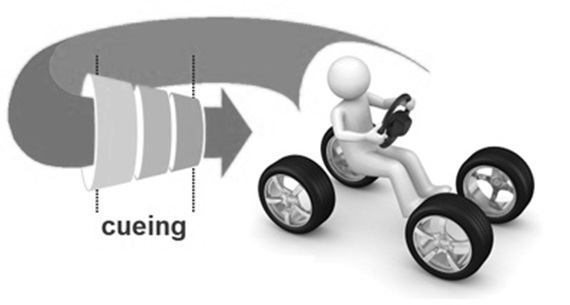I must apologize. I spend so much time “inside the loop” with driving simulator technology that I can unintentionally skip fundamentals when speaking with someone. This was recently brought to my attention in a conversation with a non-automotive technologist (a physicist, actually) who asked me about automotive industry trends, and how Driver-in-the-Loop simulators fit into the big picture. I started to answer in my usual way, explaining that driving simulators have actually been a part of the auto industry for quite a long time, primarily for human behavioral studies, but that recently, a new class of driving simulators has been emerging for vehicle engineering work. This usually delivers me straight into Ansible Motion territory where I can ramble at length about engineering class simulator use cases. However, before I could continue, I was asked a single question that caused me to reset my coordinates - and the conversation took an entirely different turn.
While the physicist immediately understood and accepted that driving simulators can be useful tools for vehicle engineering, he looked at me squarely and asked, “If I put an IMU [inertial measurement unit] in the driving pod of your newest simulator, how close is it to matching a real car?” Hmm, I thought...How do I put this gently?
The Short Answer
I won’t keep you waiting. The short answer to the physicist’s question is this: Driving simulator cockpits deliver cued motions instead of real motions, so most physical IMU measurements will not look anything like that of a real car. (Note: The "IMU trace" of the simulator's vehicle physics model should match very well.)
The Long Answer
In an off-line or SIL simulation, validation of vehicle physics is achieved in a straight-forward manner – by directly comparing simulation predictions with acquired measurements from real vehicles. In order to accomplish this, it is best to be strictly procedural in order to avoid introducing erratic human behaviors. However, in a DIL simulation, validation must not only include vehicle physics correlation, but also some assessment of human perception and reactions – and, yes, these can indeed be erratic. DIL simulations aim to present compelling virtual worlds to human drivers by including them, by bringing them right “into the loop.” And it is the erratic, the unexpected, and the subjective which is often of particular interest.
Now here is the odd part: In order to provide a realistic experience and encourage realistic driver behavior in a DIL simulator, it is imperative to provide unrealistic vehicular and environmental feedback to that driver. This is because the driving simulator is, by design, confined to a laboratory, a controlled environment that forces the driver’s experience to be contained and scripted. Weather, road conditions, optical flows, vehicle physics – all of these things are purposefully distorted before being presented to the driver. This is achieved through cueing, which, in simple terms, is akin to post-processing all the aspects of the calculated reality.
Taking Cue
Cueing relies upon an understanding of neuroscience, and upon the acceptance that what we experience at any given moment is being processed by our senses. In a well-appointed dynamic DIL simulator, we are feeding the driver’s senses as much as we can about the driving experience. But the goal of all these sensory feeds may not be to make drivers believe they are in a real car. The goal may be to make drivers behave as if they are in a real car.
For example, an operator/engineer in a DIL simulator lab may not necessarily be flattered when a driver steps out of the simulator and says, “That feels just like driving along a winding road!” From an engineer’s perspective it is much better to view the driver’s control inputs to the car via telemetry in the simulator control room and confirm that the driver’s steering, throttle, and brake inputs are just as they would be in a real car. Cueing makes this possible.
The physicist’s question about placing a physical IMU in a DIL simulator’s cabin touches upon one of many forms of cueing that takes place in a simulator lab – in this case, motion cueing. Cockpit IMUs are in place to measure cuieng performance rather than vehicle performance, so our physicist might find, for example, exaggerated accelerations and downplayed displacements compared to the usual set of expectations. One might ask similar questions about a camera, i.e. Will an optical sensor placed inside the simulator cockpit "see" a realistic view of the surrounding environment? Of course, the short answer is “no” – and this could then lead us into a discussion about vision cueing, and about appropriate ways to feed optical sensors during a DIL simulation.
State-of-the-art DIL simulators are multi-layered and complex. They are, after all, complete presentations of virtual realities, aimed directly at drivers' senses. This statement actually contains one of the fundamental secrets to success in using this technology for vehicle development work: A human is always a participant in the simulation. With that in mind, we can recognize that the cueing is necessary to inform the driver about how to “close the loop.”
To learn more about how emerging Driver-in-the-Loop (DIL) simulator technology compellingly places real people inside virtual worlds, download our FREE eBook, Looking down the road: Harnessing the benefits of driving simulator technology.


